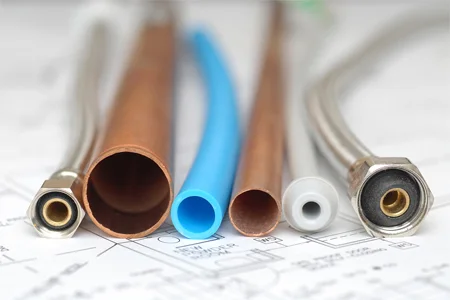Nov . 20, 2024 19:29 Back to list
pvc pipe vs ppr pipe service
PVC Pipe vs. PPR Pipe A Comprehensive Comparison
When it comes to plumbing and piping systems, choosing the right material is crucial for ensuring durability, efficiency, and long-lasting performance. Among the many options available, PVC (Polyvinyl Chloride) and PPR (Polypropylene Random Copolymer) pipes are two popular choices. Both materials have their advantages and disadvantages, making it essential to compare them based on various factors such as application, cost, installation, and long-term performance.
Material Properties
PVC pipes are made from a strong plastic polymer that is resistant to corrosion, chemical damage, and weather effects. They are known for their rigidity and are most commonly used for drain, waste, and vent piping, as well as for cold water supply.
PPR pipes, on the other hand, are made from a type of polypropylene that provides excellent flexibility. This flexibility allows PPR pipes to withstand high temperatures, making them suitable for hot water systems. Their welded joints contribute to enhanced durability and decrease the risk of leaks.
Application
PVC pipes are typically used in a variety of applications, including plumbing, irrigation, and electrical conduits. Their robustness makes them ideal for above-ground installations, but they can also be buried underground depending on the application. However, PVC is not recommended for carrying hot water due to its lower temperature tolerance.
In contrast, PPR pipes are particularly favored in applications where both hot and cold water is needed, such as in residential plumbing, heating systems, and industrial piping. Their ability to handle higher temperatures without compromising structural integrity makes them an excellent choice for hot water supply.
Cost
pvc pipe vs ppr pipe service

When comparing costs, PVC pipes tend to be less expensive than PPR pipes, making them a popular choice for budget-conscious projects. However, it’s essential to consider the long-term investment. While PPR pipes may have a higher initial cost, they boast a longer lifespan and reduced maintenance requirements, ultimately saving money over time.
Installation
Installation is another critical factor to consider. PVC pipe installations often require solvent cement for joints, which can release harmful fumes during the process and requires a careful application technique. Additionally, they may need support clamps to prevent sagging.
PPR pipes utilize a heat fusion method for joints, resulting in a seamless connection that enhances their overall integrity. The installation process for PPR can be quicker and more efficient, as it requires less equipment and is easier to handle due to the pipe’s flexibility.
Long-Term Performance
Both PVC and PPR pipes have impressive lifespans, often lasting over 50 years if installed correctly. However, PVC can become brittle over time, particularly when exposed to UV light or extreme temperatures. PPR pipes, being more flexible and resistant to high temperatures, generally outperform PVC in terms of longevity and reliability in hot water applications.
Conclusion
In conclusion, the choice between PVC and PPR pipes largely depends on the specific needs of your project. If you’re looking for a cost-effective option for cold water supply and drainage, PVC might be the way to go. On the other hand, if you require a versatile solution for both hot and cold water systems with a longer lifespan, PPR pipes are the better choice. Ultimately, understanding the strengths and limitations of each material will guide you toward the most suitable solution for your plumbing needs.
-
High-Quality PVC Borehole Pipes Durable & Versatile Pipe Solutions
NewsJul.08,2025
-
High-Quality PVC Perforated Pipes for Efficient Drainage Leading Manufacturers & Factories
NewsJul.08,2025
-
High-Quality PVC Borehole Pipes Durable Pipe Solutions by Leading Manufacturer
NewsJul.08,2025
-
High-Quality PVC Borehole Pipes Reliable PVC Pipe Manufacturer Solutions
NewsJul.07,2025
-
High-Quality UPVC Drain Pipes Durable HDPE & Drain Pipe Solutions
NewsJul.07,2025
-
High-Quality Conduit Pipes & HDPE Conduit Fittings Manufacturer Reliable Factory Supply
NewsJul.06,2025

